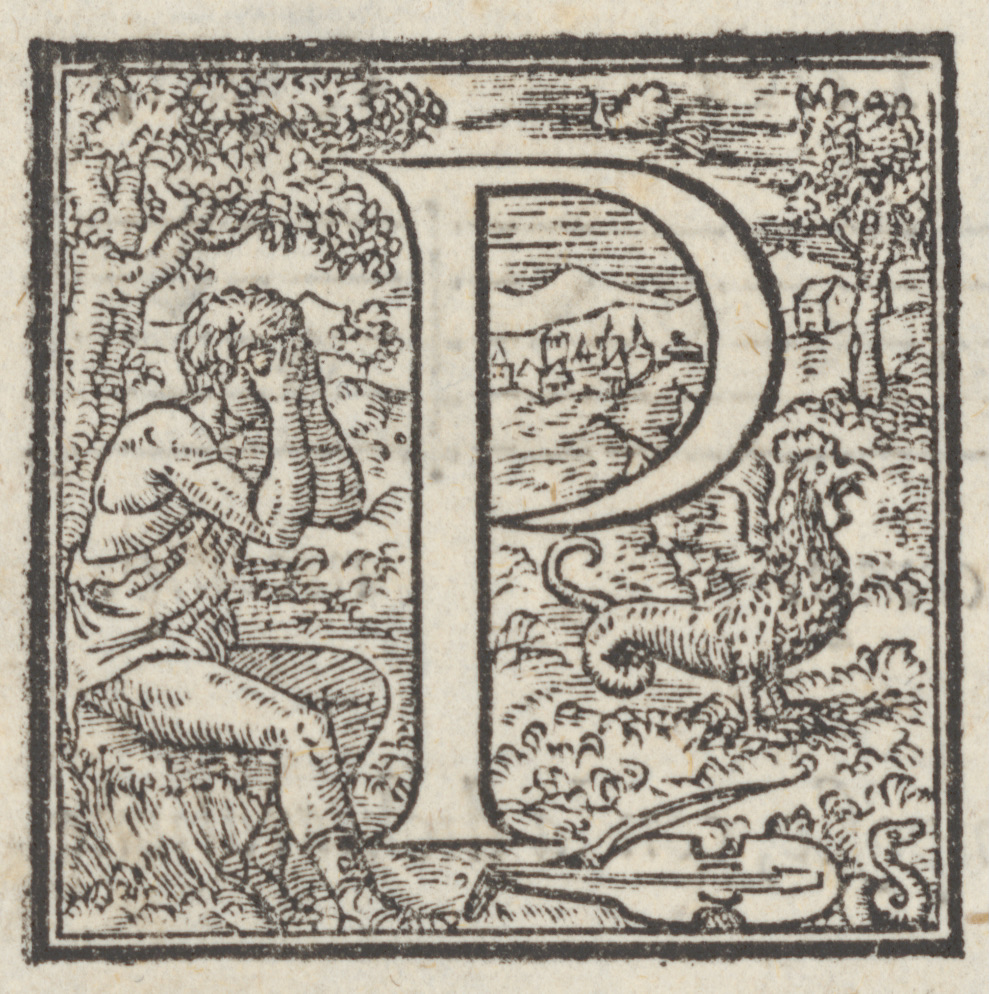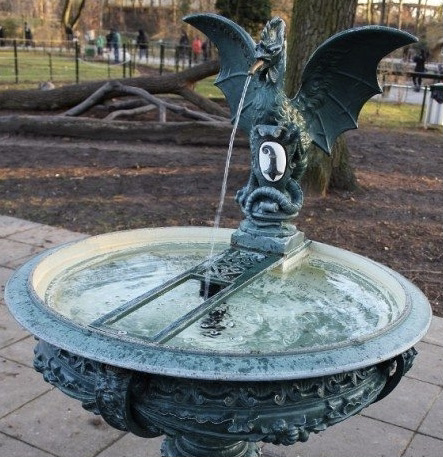A Basilisk in Vicentino’s «L’antica musica»
There is a basilisk in Nicola Vicentino’s L’antica musica ridotta alla moderna prattica. It is hidden inside one of the five big capital letters, illustrated with a mythological scene, which open the different books of the treatise: precisely in the ‘P’ opening the third book of the Prattica (fol. 43r). In the capital letter we see, on the left side, a young man with a viola at his feet, who covers his face with his hands; on the right side, a monster with the bust of a rooster and the tail of a snake. The scene depicted so far has represented an enigma without solution. Neither Franca Petrucci Nardelli (1991, p. 80), nor Maureen E. Buja (1996, p. 166) have been able to interpret it.

To understand the scene it is necessary to start from the basilisk. According to Pliny the Elder, it would be the most deadly creature of all, capable of killing with the mere glance that petrifies or incinerates. Abandoned to the ground his viola, the young man depicted in the capital letter must therefore cover his eyes with the hands to avoid the terrible look of the monster, able of turning into stone those who dare to look at him.
To connect the scene to the letter ‘P’, it is necessary to refer to a mythical snake: Python. This monstrous serpent, which protected an oracle, was killed by Apollo. In memory of the mythical clash, the god inaugurated the Pythic Games: competitions of poets, musicians and gymnasts, which were held every four years in Delphi, the seat of the oracle – poets and musicians, like the young man depicted in the capital letter. The winners of the competitions were crowned with laurel, in honour of the plant to which Python had clung, trying to escape from Apollo’s darts, also depicted in the background of the capital letter.
In order to understand why Python has been depicted as a basilisk, it is necessary to reread Ovid’s Metamorphoses. The opening of book XI narrates the tragic end of the mythical singer Orpheus, torn to pieces by the fury of the Bacchae (verses 1-66). The river Ebro collected his head and his lyre and transported them to Lesbos. Taking refuge in a cavern, the mythical cantor provided oracles. Here he was attacked by a ferocious snake, but Apollo blocked it by turning his wide open jaws into stone (vv. 59-60: «[…] in lapidem rictus serpentis apertos / congelat et patulos, ut erant, indurat hiatus»). In a daring metonymy, the engraver of the letter depicted the serpent narrated by Ovid with the features of the monster capable of the artifice performed by Apollo. In a complex reinterpretation of the different myths, Python was depicted with the features of a basilisk that forces even the mythical cantor Orpheus – surpassed in the sequence provided by the letters of the alphabet (the effigy of Orpheus was normally present in the capital letter ‘O’) – to abandon his sublime lyre to the ground.

We cannot fail to mention here that the basilisk is the symbol of Basel, the city hosting the research project currently underway. The hope is that, by scratching granitic interpretations, new investigations can provide new keys to understanding the complex cultural imaginary that lies at the basis of Nicola Vincentino’s L’antica musica ridotta alla moderna prattica: much more than a treatise on Renaissance music theory.
An extensive study of the depicted capital letters present in L’antica musica ridotta alla moderna prattica by Nicola Vicentino is in preparation.
Reference Literature
Franca Petrucci Nardelli, La lettera e l’immagine. Le iniziali ‘parlanti’ nella tipografia italiana (secc. XVI-XVIII), Florence: Olschki, 1991 (Biblioteca di bibliografia italiana, 125).
Maureen E. Buja, Antonio Barré and Music Printing in Mid-Sixteenth Century Rome, PhD., University of North Carolina at Chapel Hill, 1996.
Comments
No comment posted about A Basilisk in Vicentino’s «L’antica musica»